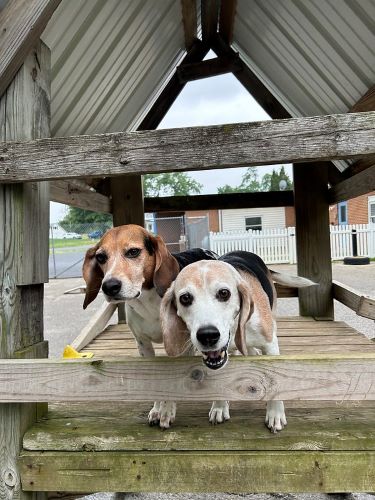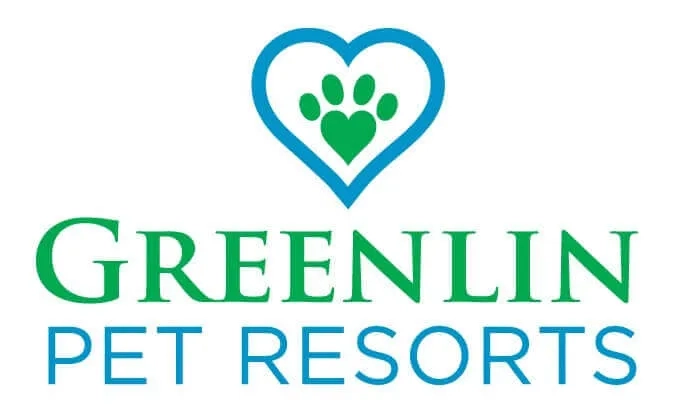How to Socialize Your Dog With Other Dogs

Socializing your dog is one of the most important things you can do as an owner. It helps ensure your dog grows into a friendly, well-adjusted companion.
But where do you start?
Socializing a dog takes time, patience, and consistency. The good news is, with the right approach, you’ll have your dog mingling with new friends in no time.
How to Socialize a Dog
First things first, make sure to take it slow. You’ll want to start socializing your dog in a controlled setting by allowing friends and family to come over one at a time to meet your dog.
Make sure to give your pup treats and plenty of praise to ensure they associate socializing with fun and positive feelings right from the get-go.
Keep initial meetings short, around 5-10 minutes. You want your dog to have good experiences, not become overwhelmed.
Other key tips to keep in mind include:
- Have visitors offer treats and pet your dog gently. Encourage calm, friendly behavior (from all parties involved).
- Supervise all interactions and step in if your dog seems stressed. Always make sure to end the interaction on a positive note.
- Repeat these short, positive visits with different people to get your dog accustomed to new friends in a slow, comfortable way.
How to Start Socializing Your Dog in Public Places
Once your dog is comfortable with visitors at home, start taking short trips to public places. Carry treats and toys to keep your dog engaged.
- Visit pet stores, parks, or outdoor cafes where dogs are allowed. Make sure to reward your pup with plenty of treats for good behavior.
- If your dog seems nervous, don’t force interactions. Remain calm to help them feel at ease.
- Continue to pursue regular public outings while slowly increasing the time spent outside. This will help your dog gain confidence over time.
With patience and positive experiences, your dog will become a social butterfly in no time. But always go at your dog’s pace — you want socialization to be enjoyable for them, not scary.
What to Look Out For: Signs Your Dog Is Uncomfortable
As you socialize your dog, keep an eye out for the key behaviors that can indicate they’re uncomfortable or anxious. Some signs to look for include:
- Avoiding eye contact: If your dog is looking away from people or other dogs, it could mean they feel threatened.
- Yawning or lip licking: Excessive yawning or licking their lips can be a sign of stress.
- Tail tucking: If your dog tucks their tail between their legs, it usually means they feel fearful or submissive.
- Growling: Any growling, especially at people or other dogs, should be addressed right away. Growling is a warning that your dog may become aggressive if the situation escalates.
- Trying to escape: If your dog is pulling on the leash, whining, or trying to get away from a person or dog, end the interaction immediately. Forcing them into an uncomfortable situation can do more harm than good.
The key is to start slowly, watch your dog closely, and make sure all experiences are positive.
Never punish or yell at your dog for showing any of the above signs. Instead, try to redirect their attention and then remove them from the source of stress.
Try not to make this too obvious, though. Otherwise, they could see removal from a situation they dislike as a reward for aggression or fear.
In all situations, remain patient and understanding. If at first you don’t succeed, try again another time.
With regular practice and positive reinforcement, your dog will gain confidence and become more comfortable in new situations.
What Are Signs of a Poorly Socialized Dog?
Unfortunately, many owners will not be able to start socializing their puppies right away. Instead, those who adopt older dogs may find themselves grappling with the difficult task of having to re-socialize their pup.
If your dog lunges, barks, or growls at other dogs during walks or at the park, this is a sign they may have been undersocialized. Early positive experiences with other dogs are key to learning good behavior and social skills, and without them, some dogs become fearful or aggressive towards strange dogs.
The best approach is to start slowly re-socializing your dog under controlled circumstances.
Find a friend with a calm, friendly dog and have them walk together at a distance while giving treats and praise. Over multiple short sessions, slowly decrease the distance between them as they remain calm.
This gradual change helps your dog learn that being near other dogs means good things happen.
When Can I Trust My Dog to Play Well with Others?
Once your dog has mastered basic obedience and socialization with people and other dogs on a leash, you can start to gauge if they’re ready for off-leash play. Some signs your dog may be ready include:
- Your dog responds immediately when you call them, even when distracted. This shows they will come when called if play gets too rough.
- Your pup plays gently and takes cues from other dogs. It’s important they understand when another dog wants to rest or is done playing.
- They don’t guard toys or treats aggressively.
- Your dog does not chase or herd other dogs obsessively — some chasing is normal, but it should not be constant or stressful for other dogs.
- They remain friendly if another dog starts to act aggressively. They do not escalate the situation by snarling or biting in return. In any situation, your dog should look to you for guidance.
- They don’t fixate on any one dog. Instead, they socialize and play with a variety of dogs, not just a single “favorite” friend. This helps ensure good behavior with all dogs.
Once you see these signs, you can start with short, supervised off-leash play sessions and slowly make them longer as your dog proves themselves.
Always watch your dog closely at first, as any dog can act unpredictably at times. With consistency, your dog will get better and better at positive social interactions.
What if My Dog Gets Overwhelmed?
No matter what, you need to stay calm while training your dog. They will feed on your emotions, and so it’s up to you to keep things calm, even when the pressure’s on.
If your dog starts barking, whining, or trying to run away from a social situation, don’t panic.
Remain composed and patient because getting stressed will only make your dog more anxious. Calmly remove your dog from the situation and find a quiet place for them to relax.
Once your dog has calmed down, slowly reintroduce them to the social setting. Give them treats, praise, and belly rubs to help them associate it with positive feelings.
With regular practice and patience, your dog will get more comfortable and confident. But some dogs may always be a bit shy or skittish around new people and pets.
Every dog has a different tolerance for social stimulation. Pay close attention to your dog’s body language and reactions to determine how much is too much for them.
It’s better for dogs to have a few positive experiences than to be pushed into stressful situations that frighten them or cause anxiety.
With your love and support, even timid dogs can become more at ease in social settings. But accept them for who they are, and avoid comparing their progress to other dogs.
How Long Does It Typically Take To Socialize a Dog?
Every dog is different, so the time it takes to fully socialize them may vary. Your dog’s timeline will likely skew away from traditional stats, so stay patient and keep these important factors in mind:
Age
Puppies require early and extensive socialization, so the process typically takes 3-4 months of consistent training and positive experiences. For adult dogs, it can take six months to over a year, depending on the dog’s background and temperament.
Temperament
Friendly, outgoing dogs usually socialize faster than shy or fearful dogs. Be patient and let your dog set the pace. Never force interactions if your dog seems uncomfortable.
Consistency
The key is short, positive interactions with new people and environments multiple times per week. Even 15 – 20 minutes a day, a few times a week can make a big difference. The more you socialize with your dog, the faster they will become comfortable.
Supervision
Always closely supervise your dog during interactions, and never leave them unmonitored in situations with strangers or in new places. Make sure all experiences remain positive to build good associations.
Training
Basic obedience training helps give your dog structure and confidence in new situations. Work on commands like “sit,” “stay,” and “leave it” before introducing them to new people or dogs.
Looking for the Easiest Way to Socialize Your Dog?
If you’re looking for a sure-fire shortcut, consider bringing your pup to Greenlin Pet Resorts. Our team offers a full ‘Puppy Academy,’ where young dogs can enroll in premier Puppy Obedience Training while socializing with other pups right there on the course.
We also offer Day Play and Train courses for adult dogs, as well as a full Lodge and Learn program for every kind of pup.
On top of that, new owners can also take advantage of our daily Dog Daycare or dog boarding services when it’s time to pop out of town.
So don’t waste another minute. Learn how to help your pup live their best life by asking the pros at Greenlin Pet Resorts for a little help socializing your new dog.
Reach out to one of our six locations in Central Pennsylvania to schedule your next appointment at Greenlin today.
